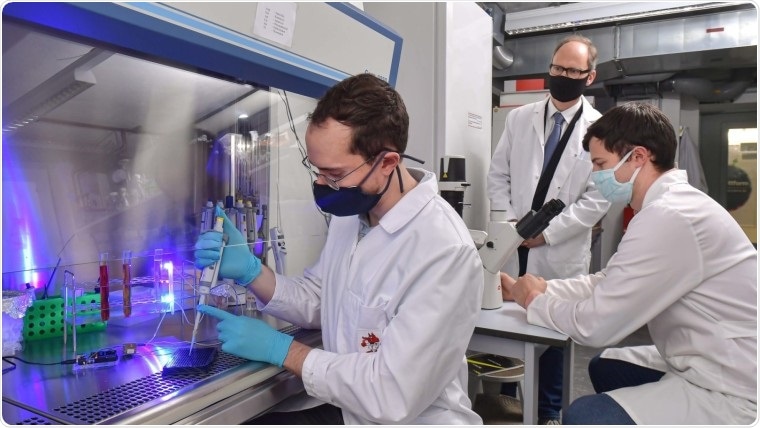Photopharmacology is the study that examines the use of light to change the impact of drugs on and off. For the first time, researchers from Jena, Munich, and New York have successfully applied this technique to regulate a component of cells that was earlier believed to be inaccessible.

The new drug called Optojasp only becomes active when violet light irradiates it. Image Credit: Jürgen Scheere.
Present everywhere and now selectively controllable
Up to now, there are no drugs available that target actin, because the protein is found everywhere in the body, for example in large quantities in the muscles. Such a substance would therefore have little to no targeted effect. However, our new compounds only exert activity on actin in areas where cells are exposed to the appropriate light.”
Hans-Dieter Arndt, Professor and Researcher in Organic Chemistry, Friedrich-Schiller University Jena
Since actin happens to be a vital component of the cell structure, more accurately of the cytoskeleton, each cell can be selectively exploited to a precision down to 10 µm. This method can also be employed to regulate the movement of the selected cells.
An international research team of Arndt has reported on this in the leading Journal of the American Chemical Society.
Violet light switches on, green light switches off
In their study, the researchers produced a variant of a natural substance that hardens the very dynamic actin cytoskeleton in the organism, in its natural form.
The molecule was further developed in the laboratory variant so that its structure undergoes a change when violet light impinges on it. This boosts the stabilizing effect of this molecule.
When the green light is switched on, or after a specific period of time, the structure returns to its inactive rudimentary form and the natural dynamics are re-established.
In laboratory experiments, when this substance known as Optojasp is absorbed by cells, light can be applied to particularly regulate the mobility and viability of each cell—as well as the communication of the cytoskeleton.
Looking forward to potential upcoming applications, Arndt added, “It is possible that this method could be used in the future to treat diseases of the eye or on the skin, i.e. of organs that can easily be exposed to light. This technique could also be of interest in the field of neuroregeneration. The aim here is often to encourage certain nerve cells to grow in preference to others.”
Arndt also envisages the possibility of implementing his technique in highly mobile immune cells.
“A new tool for biology”
Above all, I consider this to be a new and exciting tool for biology; these molecules should make it easier to study biological systems than with the help of light-sensitive proteins, which might be introduced by genetic engineering. With the Optojasps, the influence of actin dynamics can be studied directly—all you need to do is to add the compound, and irradiate!”
Hans-Dieter Arndt, Professor and Researcher in Organic Chemistry, Friedrich-Schiller University Jena
Since the method has been demonstrated to work, Arndt with his collaborators are working to further improve these molecules and examine them in more detail.
Source:
Journal reference:
Borowiak, M., et al. (2020) Optical Manipulation of F-Actin with Photoswitchable Small Molecules. Journal of the Americal Chemical Society. doi.org/10.1021/jacs.9b12898.